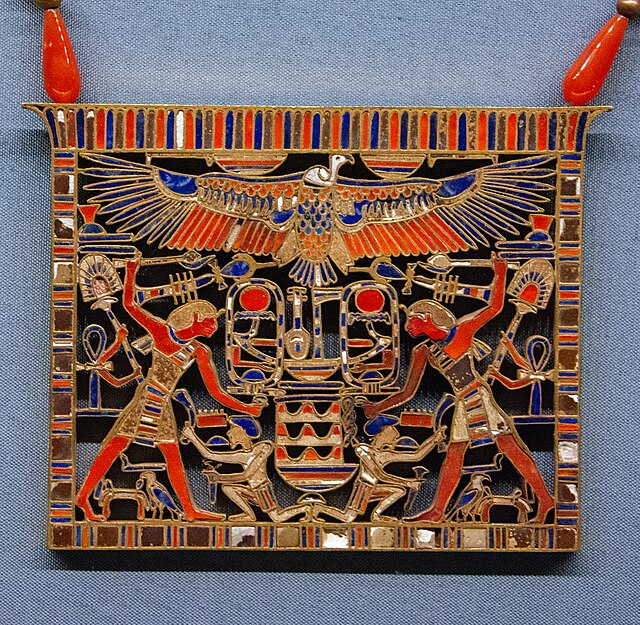Amenemhat III, also known as Amenemhet III, was a pharaoh of ancient Egypt and the sixth king of the Twelfth Dynasty of the Middle Kingdom. He was elevated to throne as co-regent by his father Senusret III, with whom he shared the throne as the active king for twenty years. During his reign, Egypt attained its cultural and economic zenith of the Middle Kingdom.
Statue of Amenemhat III in the Pushkin Museum, Moscow
Pectoral of Amenemhat III from the tomb of Mereret at Dahshur, one of his sisters
Amenemhat III as a recumbent sphinx, one of the so-called "Hyksos sphinxes"
One of the naos from the funerary temple of Amenemhat III at Hawara, now located in the Egyptian Museum at Cairo. The left figure, flexing his arm across his chest in order to bring a sign "ankh" (life) to the face of his partner, is Amenemhat III. The king on the right is his son and sucessor, Amenemhat IV.
Ancient Egypt was a civilization of ancient Northeast Africa. It was concentrated along the lower reaches of the Nile River, situated in the place that is now the country Egypt. Ancient Egyptian civilization followed prehistoric Egypt and coalesced around 3100 BC with the political unification of Upper and Lower Egypt under Menes. The history of ancient Egypt unfolded as a series of stable kingdoms interspersed by periods of relative instability known as “Intermediate Periods.” The various kingdoms fall into one of three categories: the Old Kingdom of the Early Bronze Age, the Middle Kingdom of the Middle Bronze Age, or the New Kingdom of the Late Bronze Age.
A typical Naqada II jar decorated with gazelles (Predynastic Period)
Early tomb painting from Nekhen, c. 3500 BC, Naqada, possibly Gerzeh, culture
The Narmer Palette depicts the unification of the Two Lands.
The pyramids of Giza are among the most recognizable symbols of ancient Egyptian civilization.








